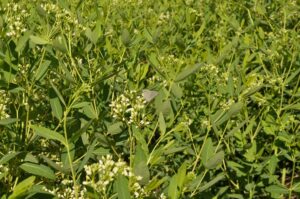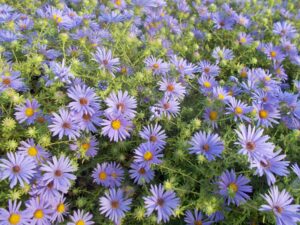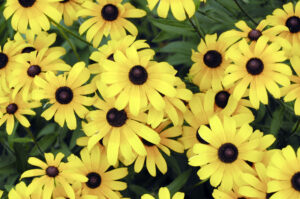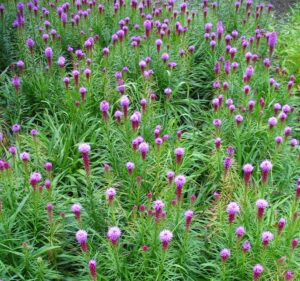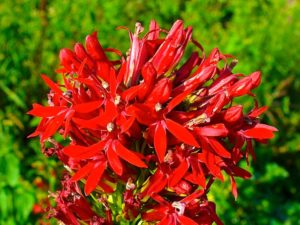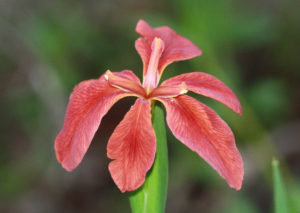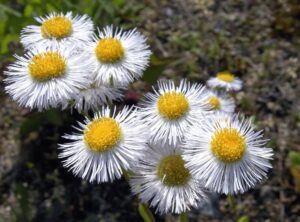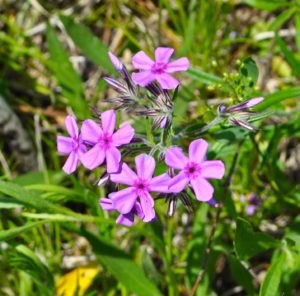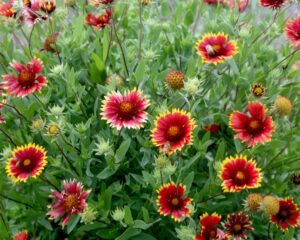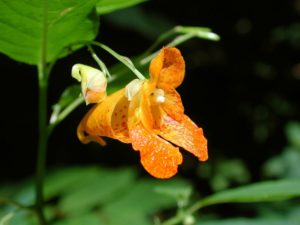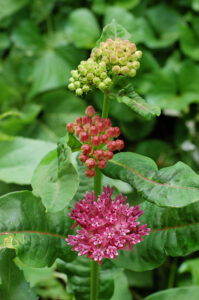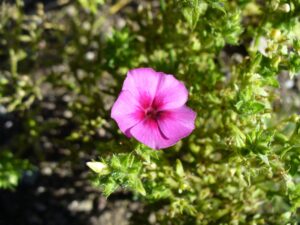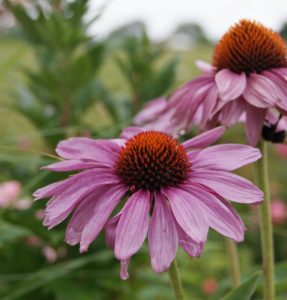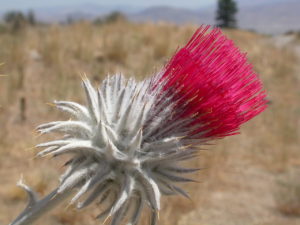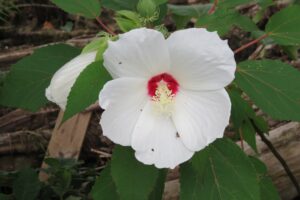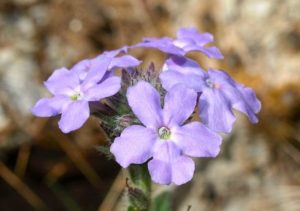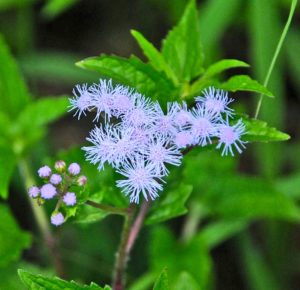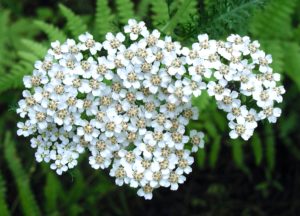Imagine a garden without the flutter of butterfly wings—it would feel empty, wouldn’t it? With their kaleidoscopic wings, butterflies aren’t just a feast for the eyes; they play a pivotal role in the cycle of pollination. Crafting a garden that captivates both human senses and butterflies’ discerning tastes involves selecting flora that dazzles and nourishes.
By choosing plants that serve dual purposes—offering nectar for the graceful adults and plants that caterpillars need for growth—you create an oasis that beckons these winged wonders.
In their adult form, butterflies seek out nectar to sip on, fluttering from bloom to bloom in a delicate dance of survival. Yet, their young, the caterpillars, are bound to the land, dependent on a very specific nursery of sorts: their host plant. This plant, chosen by their mothers to lay her eggs on, becomes their sole food source when the caterpillars hatch.
It’s a fascinating life cycle, one that your garden can support. It can enrich the biodiversity of your backyard while providing a front-row seat to one of nature’s most enchanting shows.
Below are thirty-three native perennials (and a few annuals) that butterflies prefer for nectar and host plants. (Follow this link for a list of specific butterfly species and their preferred host plants.) Please take care never to apply insecticides to butterfly habitats. Also see: Native annuals for butterflies
(* A special thanks to all the excellent photographers who generously allow their images to be used to enhance pages like this.)
Nectar perennials for butterflies

Aromatic Aster, Symphyotrichum oblongifolium (Andrey Zharkikh / Flickr; CC BY 2.0)
| Aster (Aromatic, New England, Smooth, et al.) |
| Aster spp. |
| Perennial |
| Bloom time: Late spring–Early fall |
| Zones: 3–9 |

Black-eyed Susan, Rudbeckia hirta (Frank Mayfield / EOL; CC BY-SA 2.0)
| Black-eyed Susan |
| Rudbeckia hirta |
| Annual, Perennial |
| Bloom time: Mid-summer–Early-fall |
| Zones 5–10 |

Dense Blazing Star, Liatris spp. (Marc Ryckaert / Wiki; CC BY-SA 2.5(
| Blazing Star (Dense, Prairie, et al.) |
| Liatris spp. |
| Perennial |
| Bloom time: Mid-spring–Early-fall |
| Zones 3–10 |

Blue False Indigo, Baptisia australis (Fritzflohrreynolds / Wiki; CC BY-SA 3.00
| Blue False Indigo |
| Baptisia australis |
| Perennial |
| Bloom time: Late spring–Mid-summer |
| Zones: 3–10 |

Common Boneset, Eupatorium perfoliatum (H. Zell / Wiki; CC BY-SA 3.0)
| Boneset (aka Snakeroot, Thoroughwort) |
| Eupatorium perfoliatum |
| Perennial |
| Bloom time: Early fall–Late fall |
| Zones 3–9 |

Butterfly Weed, Asclepias tuberosa (SB Johnny / EOL; CC BY-NC 3.0)
| Butterfly Weed |
| Asclepias tuberosa |
| Perennial |
| Bloom time: Mid-summer–Early-fall |
| Zones: 4–10 |

Cardinal Flower, Lobelia cardinalis (H. Zell / Wiki; (CC BY-SA 3.0)
| Cardinal Flower |
| Lobelia cardinalis |
| Perennial |
| Bloom time: Late summer–Early fall |
| Zones: 2–10 |

Copper Iris, Iris fulva (Scott Loarie / EOL; CC BY3.0)
| Copper Iris |
| Iris fulva |
| Perennial |
| Bloom time: Early spring–Spring |
| Zones: 5–11 |

Daisy Fleabane, Erigeron annuus (contri / Wiki; CC BY-SA 2.0)
| Daisy Fleabane |
| Erigeron annuus |
| Annual or biennial |
| Bloom time: Mid-spring–Mid-summer |
| Zones: 2–8 |

Hemp Dogbane, Apocynum cannabium, and Gray Hairstreak Butterfly, Strymon melinus (Tony Frates / Flickr; CC BY-NC-SA 2.0)
| Dogbane |
| Apocynum cannabinum |
| Perennial |
| Bloom time: Summer |
| Zones: 2–8 |

Downy Phlox, Phlox pilosa (Aaron Gunnar / EOL; CC BY-SA 3.0)
| Downy Phlox |
| Phlox pilosa |
| Perennial |
| Bloom time: Mid-spring |
| Zones: 4–9 |

Goldenrod, Solidago sp. (WelcomeWildlife.com CC BY-NC-SA 3.0)
| Goldenrod (Showy, Carolina Moonlight, et al.) |
| Solidago spp. (can be invasive) |
| Perennial |
| Bloom time: Varies; most in late-summer–Fall |
| Zones: 2–8 |

Great Blue Lobelia, Lobelia siphilitica (Doug McGrady / Wiki; CC BY 2.0)
| Great Blue Lobelia |
| Lobelia siphilitica |
| Perennial |
| Bloom time: Late summer–Early fall |
| Zones: 3–9 |

Indian Blanket (Duane Bryce / Flickr; CC BY 2.0)
| Indian Blanket |
| Gaillardia pulchella |
| Annual |
| Bloom time: Summer–Early-fall |
| Zones: 3–9 |

Joe-Pye Weed, Eupatorium fistulosum (H. Zell / EOL; CC BY-SA 3.0)
| Joe-Pye Weed |
| Eupatorium fistulosum |
| Perennial |
| Bloom time: Mid-summer–Early-fall |
| Zones: 3–8 |

Lanceleaf Coreopsis, Coreopsis Ianceolata (Eleanor / Flickr; CC BY-NC 2.0)
| Lanceleaf Coreopsis |
| Coreopsis Ianceolata |
| Perennial |
| Bloom time: Late spring–Mid-summer |
| Zones: 4–9 |

Spotted jewelweed, Impatiens capensis (Fritz Geller-Grimm / EOL; CC BY 3.0)
| Spotted Jewelweed |
| Impatiens capensis |
| Annual |
| Bloom time: Mid-summer–Early-fall |
| Everywhere except arid regions |

Sundial Lupine, Lupinus perennis (Marc Ryckaert / EOL;C BY 3.0)
| Lupine (Sundial, Perennial, et al.) |
| Lupinus spp. |
| Perennial |
| Bloom time: Spring–Summer |
| Zones: 3–9 |

Purple milkweed, Asclepias purpurascens (Derek Ramsey / Wiki; GNU Free Documentation 1.2)
| Milkweed (Marsh, Rose, Swamp, Purple, et al.) |
| Asclepias spp. |
| Perennial |
| Bloom time: Varies |
| Zones 2–9 |

Missouri primrose, Oenothera missouriensis (Joshm / Flickr; CC BY-NC-SA 2.0)
| Missouri Primrose |
| Oenothera missouriensis |
| Perennial |
| Bloom time: Late spring–Early-summer |
| Zones: 4–8 |

Native Yellow Honeysuckle, Lonicera flava (Missouri Dept. of Conservation; PD)
| Native Yellow Honeysuckle |
| Lonicera flava |
| Perennial vine (avoid non-native bush variety) |
| Bloom time: Spring |
| Zones: 4–9 |

Annual Phlox, Phlox drummondii (Neelix / EOL; PD)
| Phlox |
| Phlox spp. |
| Annual, Perennial |
| Bloom time: Spring |
| Zones: 2–10 |

Purple Coneflower, Echinacea purpurea (Danny Stevens / EOL; CC BY-SA 3.0)
| Purple Coneflower et al. |
| Echinacea spp. |
| Perennial |
| Bloom time: Summer–Late-fall |
| Zones: 3–9 |

Purple Poppy Mallow, Callirhoe involucata (John Hilty / EOL; CC BY 3.0)
| Purple Poppy Mallow |
| Callirhoe involucata |
| Perennial |
| Bloom Time: Early spring–Mid-summer |
| Zones: 3–9 |

Red Thistle, Cirsium occidentale (Matt Lavin / Wiki; CC BY-SA 2.0)
| Red Thistle |
| Cirsium occidentale |
| Biennial |
| Bloom time: Spring |
| Zones: 2–9 |

Scarlet Sage., Salvia coccinea (Carl Lewis / Flickr; CC BY 2.0)
| Scarlet Sage |
| Salvia coccinea |
| Annual |
| Bloom time: Summer–Fall |
| Zones: 4–9 |

Spiked Gayfeather, Liatris spicata (H Zell / EOL; CC BY-SA 3.0).jpg
| Spiked Gayfeather |
| Liatris spicata |
| Perennial |
| Bloom time: Mid-summer–Late-summer |
| Zones: 3–10 |

Common Sunflower, Helianthus annuus (Evening / EOL; CC BY-NC 3.0)
| Sunflower (Common, Plains, Woodland, et al.) |
| Helianthus spp. |
| Annual, Perennial |
| Bloom time: Late summer–Fall |
| Zones 3–9 |

Swamp Rose Mallow, Hibiscus Moscheutos (Virginia State Parks / Flickr; CC BY 2.0)
| Swamp Rose Mallow |
| Hibiscus Moscheutos |
| Perennial |
| Bloom time: Late-summer |
| Zones 5–8 |

Southwestern Mock Vervain, Glandularia gooddingii (Keir Morse / EOL; CC BY-NC-SA 3.0)
| Verbena (Rose, Pink, Southwestern, et al.) |
| Verbena spp. |
| Annual, Perennial |
| Bloom time: Late summer–Early fall |
| Zones: 3–8 |

Wild Ageratum, Eupatorium coelestinum (Michael P. Riggs; EOL; CC BY-NC 3.0)
| Wild Ageratum (aka Blue Mistflower) |
| Eupatorium coelestinum |
| Perennial |
| Bloom time: Late summer–Early fall |
| Zones: 5–9 |

Wild geranium, Geranium maculatum (Anita / EOL; CC BY-NC 3.0)
| Wild Geranium |
| Geranium maculatum |
| Perennial |
| Bloom time: Late spring–mid-summer |
| Zones: 3–8 |

Common Yarrow, Achillea millefolium (Anita / EOL; CC BY-NC-SA 3.0)
| Yarrow (Common, Mountain) |
| Achillea spp. |
| Perennial |
| Bloom time: Mid-summer–Fall |
| Zones: 1–11 |
More reading:
Native plants for hummingbirds
Attract butterflies to your yard
General anatomy of insects
In your yard: butterfly species
Guidelines for collecting seeds
Online native plant nursery: Prairie Nursery
